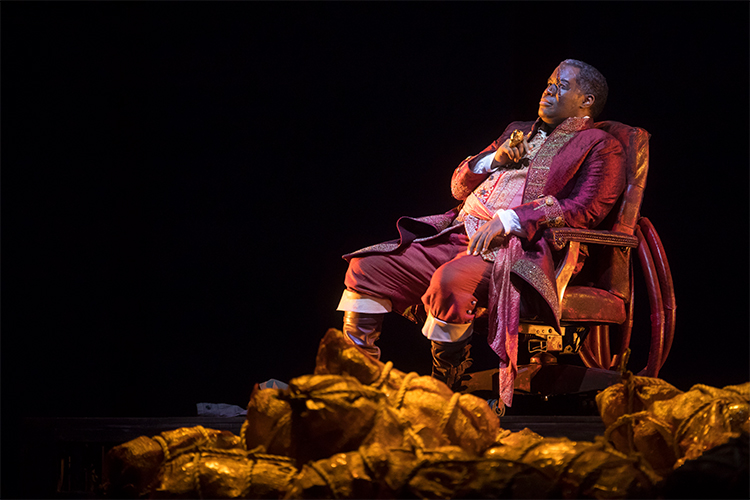April 17, 2019
Modern Match - Siegfried
Despite the millennia that separate the two, Wagner turned to ancient folktales as source material for his Ring cycle. Today, if the contemporary success of writer Neil Gaiman is any indication, we’re still gripped by mythology. Gaiman borrows from folktales, recontextualizing characters, symbols, and tropes in his fiction -- Stardust, American Gods – and in Norse Mythology. In the introduction to this last work, Gaiman explains his lifelong love of myths, saying “It was the fact that the world and the story ends, and the way that it ends and is reborn, that made the gods and the frost giants and the rest of them tragic heroes, tragic villains. Ragnarok made the Norse world linger for me, seem strangely present and current.”

Eric Owens as Wagner's Wotan
That sentiment surely would have been meaningful for Richard Wagner, who, despite using ancient source material, viewed his Ring cycle as revolutionary. His retelling of the myths was a way to reflect his understanding of his own place in culture. His conceptualization of Wotan, for example, differs from the classical character from which he is derived, and differs from Gaiman’s interpretation, Mr. Wednesday. While all these characters assume the form of a wanderer, and all are missing one eye, Siegfried’s Wotan (a.k.a. The Wanderer) expresses frustration with Valhalla, hoping to cede power to a new race of men. Gaiman’s Wednesday, however, is quite the opposite; seeking to reinstate the gods’ power, he’s wary of the perceived human worship of media and technology. One could speculate that these different iterations of the same character reflect contemporary fears and consciousness.
But there is another important question we must ask. Why, when we have Gaiman’s and Marvel’s and so many other retellings of these myths, do we still care so much about the Ring cycle? Though we’ve left behind so many of Wagner’s political and social ideas, his artistic work still looms large in the canon. Gaiman also has an answer for this in Norse Mythology: “That’s the joy of myths. The fun comes in telling them yourself – something I warmly encourage you to do, you person reading this.”

Ian McShane as novelist Neil Gaiman's character Mr. Wednesday
Each time the Ring is presented, the potential is there for audiences to discover new lessons and ancient truths that resonate as much today as it did centuries ago. Lyric is attempting, then, to recontextualize Wagner for a modern world, allowing audiences to experience the beauty of the music alongside all the splendor of a new Lyric production. As Siegfried grows from naive boy to culture hero, audiences can witness their own path to maturity and perhaps (we hope) the progression of society as well. In this way, Lyric does more than merely polish an old work. Through reimagining, the company repossesses the Ring cycle, creating a mythology that belongs to everyone.
In the end, I believe we tell and retell these myths out of a deep-rooted need to understand our own culture through storytelling. That is what keeps Siegfried returning to stages, keeps Gaiman retelling his stories, and keeps our collective mythologies alive.
The writer, an intern in Lyric’s marketing and communications department last spring, is currently the relationship marketing associate at the Chicago Symphony Orchestra.

